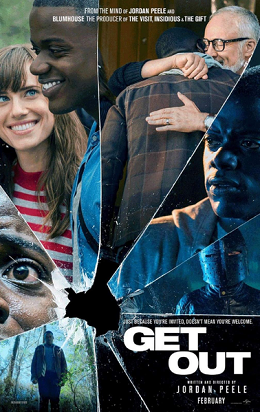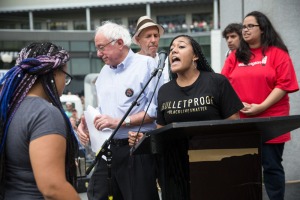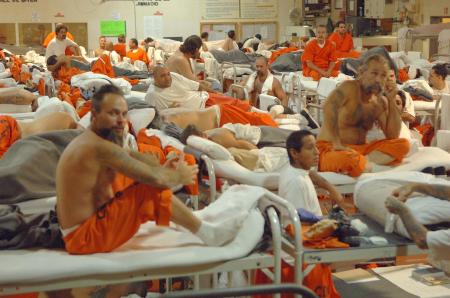
The “War on Drugs’ continues to take a heavy toll not only on our country but on Mexico as well. The drug cartels that terrorize that country grew up to feed the underground US drug market. Matthew Heineman’s documentary, Cartel Land, examines this situation.
The film begins with a scene of Mexican cartel members cooking meth. One of them frankly informs us that most of their meth will go to the US. We are then shown a funeral for several members of a Mexican family. When the owner of a lime farm refused to pay money to the Knights Templar cartel, they responded by killing the workers on his farm, as well as their families. We are then introduced to Jose Mireles, a doctor, who has organized a vigilante group, Autodefensas, to fight the Knights Templar in the Mexican state of Michoacán. The go from town to town and drive away any cartel members that they find. In one scene, an army squadron shows up and tries to disarm the Autodensas. The people of the town come to the aid of the vigilantes, and the army is forced to back down. The Autodefensas grow rapidly in size and power. There are inevitably abuses, and in some cases outright criminality. Mireles tries to reassert control over the group, but one gets the impression that he is in over his head. He suspects that the Autodefensas have been infiltrated by the Viagra cartel, and it soon becomes clear that this is exactly what has happened. The Autodefensas become “legal” by joining the federal police, with cartel members in their ranks. Fearing for his life, Mireles goes into hiding. He is eventually arrested by the government for illegal firearms possession, and he is now in prison. We are shown members of the Viagra cartel, some of them wearing federal police uniforms, cooking meth.
This story is interspersed with another story about a US vigilante group, Arizona Border Recon, which claims to be “defending” the border. (The Southern Poverty Law Center has identified these people as a hate group.) Their leader is Tim “Nailer” Foley, who lives in Arizona’s Alta Valley. Foley claims that Mexican drug cartels have taken over this area, although he provides no evidence to prove this claim. We see Foley and his followers patrolling the desert, with nary a cartel member in sight. (This is marked contrast to the gun battles we see in some of the Michoacán scenes.) In one scene they come across some immigrants, and they promptly turn them over to the Border Patrol. That is all the “invasion” that we see. One gets the uncomfortable feeling that the people in ABR get their ideas from watching Fox News. This is clearly another situation that can’t end well.
This film is deeply disturbing to watch. Seeing the Autofefensas turned into their opposite shows just how powerful and corrupting the drug trade is. The only possible solution is to legalize and regulate the sale of “recreational” drugs.









